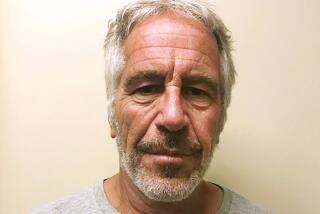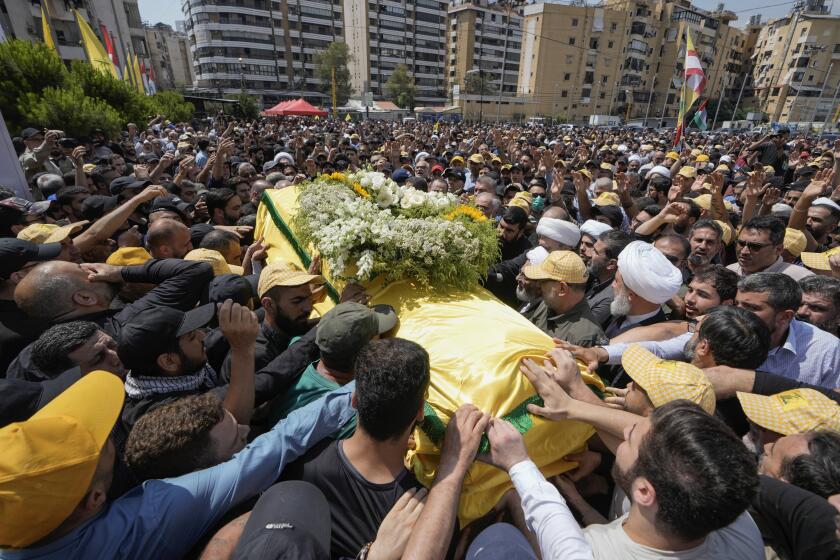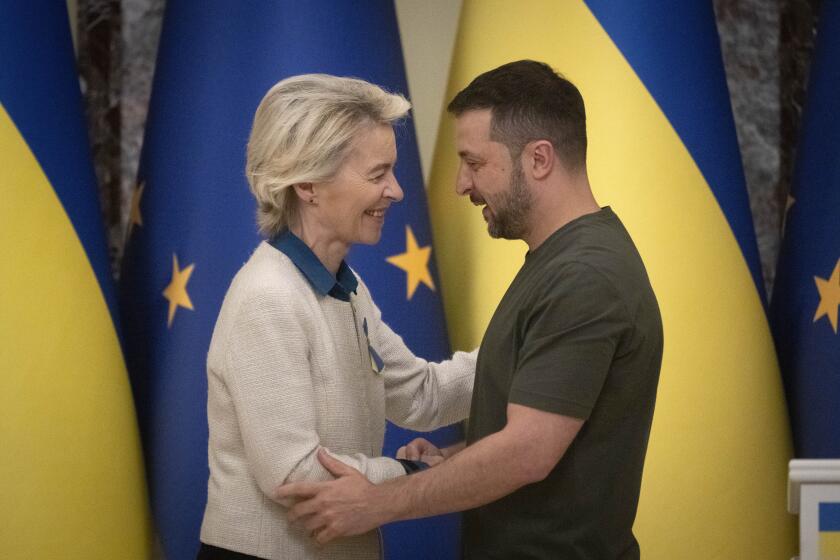Homegrown radicals changing terrorism threat in U.S., officials say
The rising threat from homegrown radicals makes terrorist plots against the U.S. harder to detect and more likely to succeed, top administration officials are scheduled to tell Congress on Wednesday.
In written testimony to be delivered before the Senate Homeland Security Committee, FBI Director Robert S. Mueller III, Homeland Security Secretary Janet Napolitano and Michael E. Leiter, chief of the National Counterterrorism Center, each say terrorist threats have become more complex, with a greater array of plotters inspired by Al Qaeda without necessarily being directly linked to the terrorist network.
“Homegrown terrorists represent a new and changing facet of the terrorist threat,” Napolitano said in the testimony, obtained in advance by the Los Angeles Times. “The threat is evolving in several ways that make it more difficult for law enforcement or the intelligence community to detect and disrupt plots.”
Citing the November shootings at Ft. Hood in Texas, which left 13 dead, and the attempted Times Square bombing in May, among others, Leiter said there were more homegrown attacks or attempts in the last year than at any time since Sept. 11, 2001, when hijackers crashed airliners into the World Trade Center and the Pentagon.
“Homegrown extremists are increasingly more savvy, harder to detect, and able to connect with other extremists overseas,” Mueller said. “The Internet has expanded as a platform for spreading extremist propaganda, a tool for online recruiting, and a medium for social networking with like-minded violent extremists, all of which may be contributing to the pronounced state of radicalization inside the United States.”
The statements were less clear on how the government intends to counter the domestic threat.
A recent report by the Bipartisan Policy Center, the successor to the Sept. 11 commission, called it “fundamentally troubling … that there remains no federal government agency or department specifically charged with identifying radicalization and interdicting the recruitment of U.S. citizens or residents for terrorism.”
That is a major problem, said Sen. Joe Lieberman, the Connecticut independent who chairs the committee, and Sen. Susan Collins of Maine, the ranking Republican.
“We need to focus more deeply on the role of the Internet in violent Islamist extremism and reassess the adequacy of the tools and legal authorities we have to detect online plotting and radicalization,” Lieberman said.
The hurdles are both bureaucratic and legal. The government’s counter-terrorism apparatus consists mainly of law enforcement agencies that see their mission as investigating threats, crimes and conspiracies — not expressed radical ideas that amount to protected free speech.
Napolitano’s testimony described new initiatives to encourage tips from the public, including an advertising campaign with the slogan, “See something, say something.” Mueller touted the FBI’s outreach to Muslim communities.
Napolitano noted that the Department of Homeland Security is working with an array of 72 state and regional “fusion centers,” where state and local law enforcement officials with top-secret clearance have access to high-level intelligence and analyze reports of suspicious activity generated by cops on the beat.
The Obama administration has thus far resisted any national program to combat radicalization similar to one undertaken in Britain, which is spending $200 million a year to “challenge the ideology behind violent extremism and support mainstream voices.”
The administration has been criticized because it has avoided terms such as “Islamists” or “jihadists” to describe Al Qaeda and related terrorist groups.
“It risks reinforcing the idea that the United States is somehow at war with Islam itself,” Obama’s counter-terrorism advisor, John Brennan, said in an August speech.
Lieberman strongly disputed that argument, saying Muslims understand the difference between their faith and “the terrorist political ideology that has exploited it.”
The officials said the good news is that intelligence reports show that Al Qaeda is weakened, pummeled by airstrikes from drones and other operations.
The CIA has carried out 15 aerial drone attacks in Pakistan this month and 69 this year, according to the Long War Journal, a blog that tallies the strikes from media reports. In comparison, there were 36 attacks in 2008.
Those operations, however, have not damped Al Qaeda’s ability to inspire disaffected Muslims, including Americans, the officials said.
Al Qaeda’s ability to pull off spectacular attacks has diminished, the officials said. But smaller attacks require fewer steps, Napolitano said, and “there are fewer opportunities to detect such an attack before it occurs.”
ken.dilanian@latimes.com
More to Read
Sign up for Essential California
The most important California stories and recommendations in your inbox every morning.
You may occasionally receive promotional content from the Los Angeles Times.











